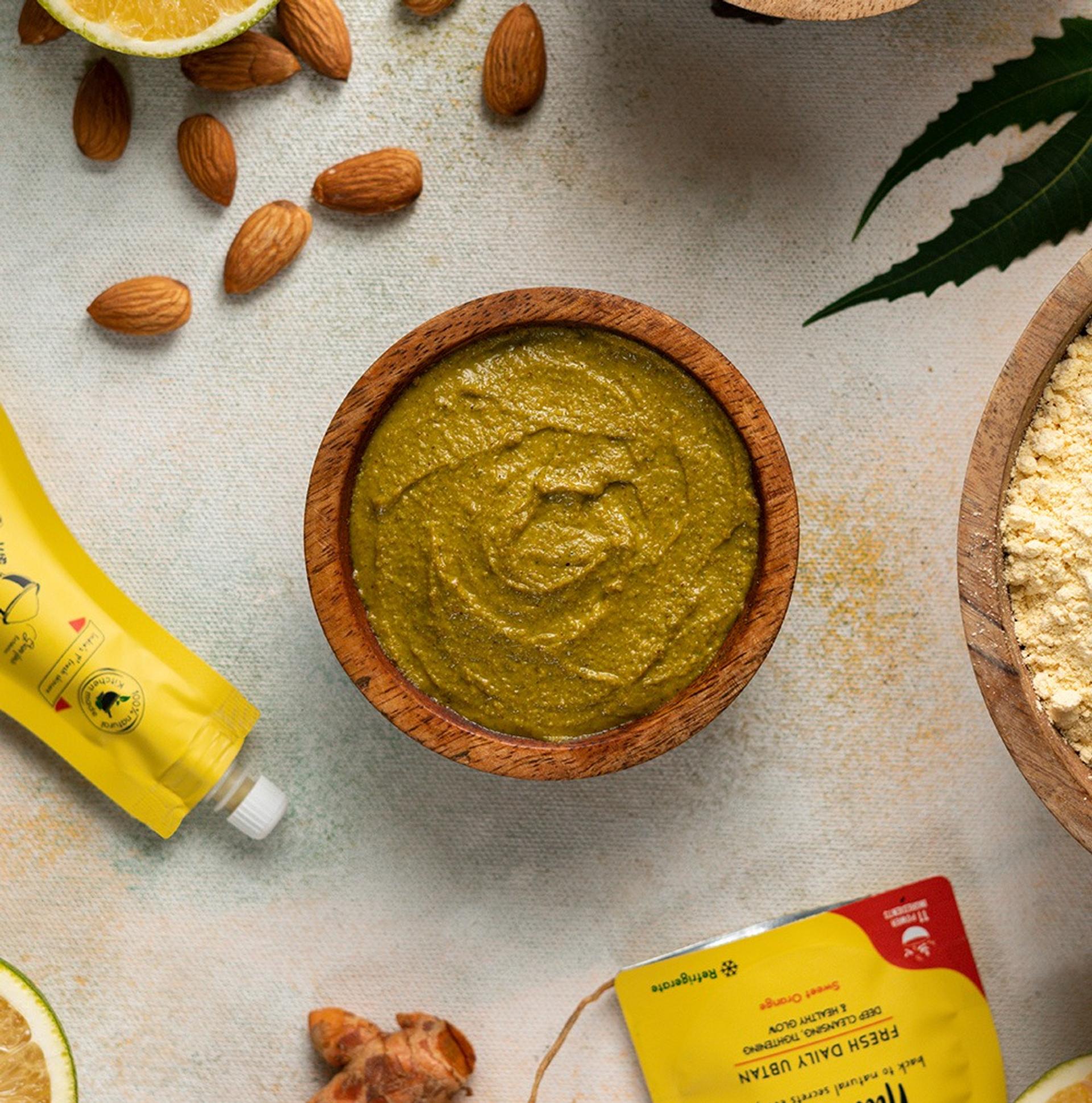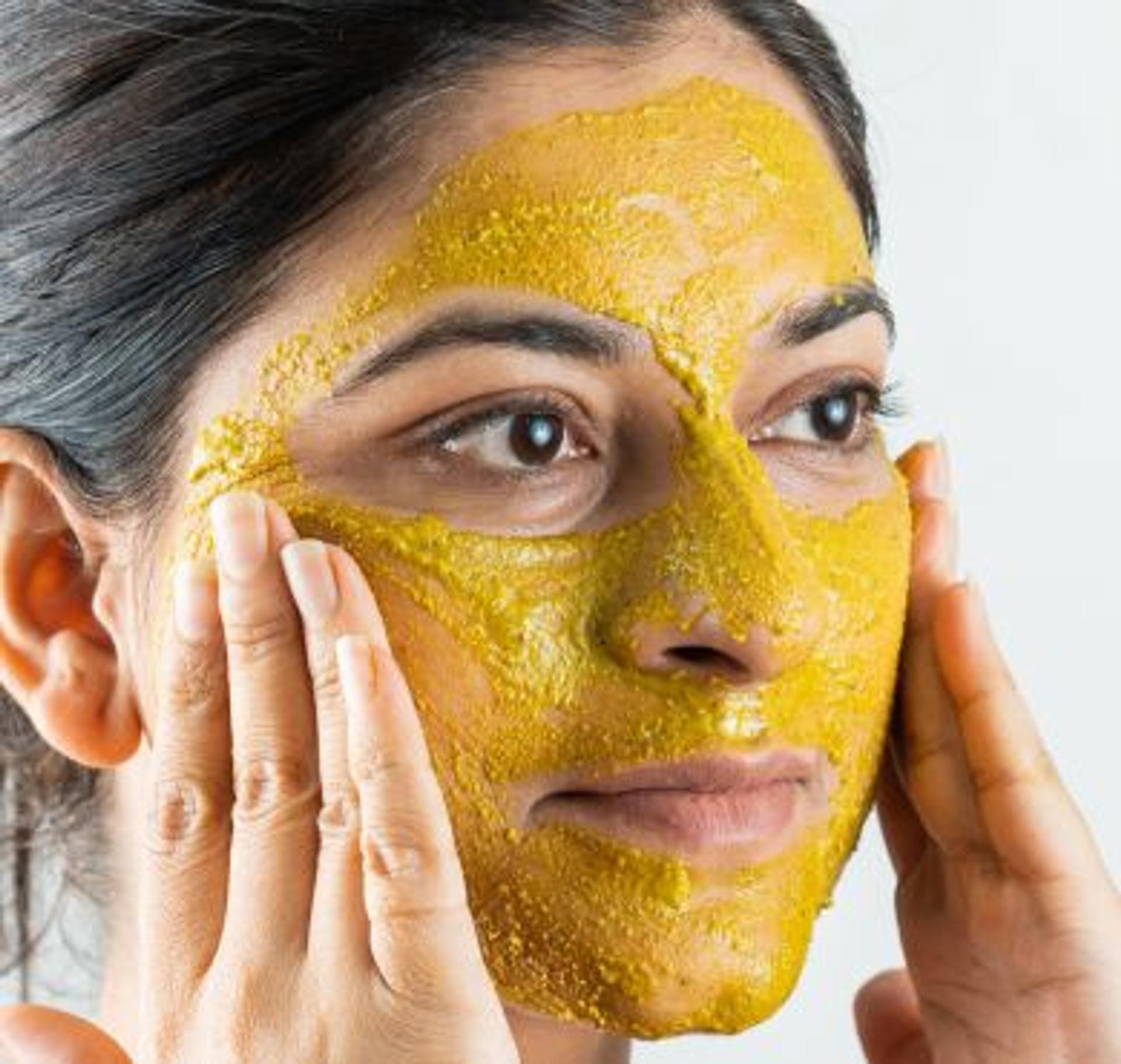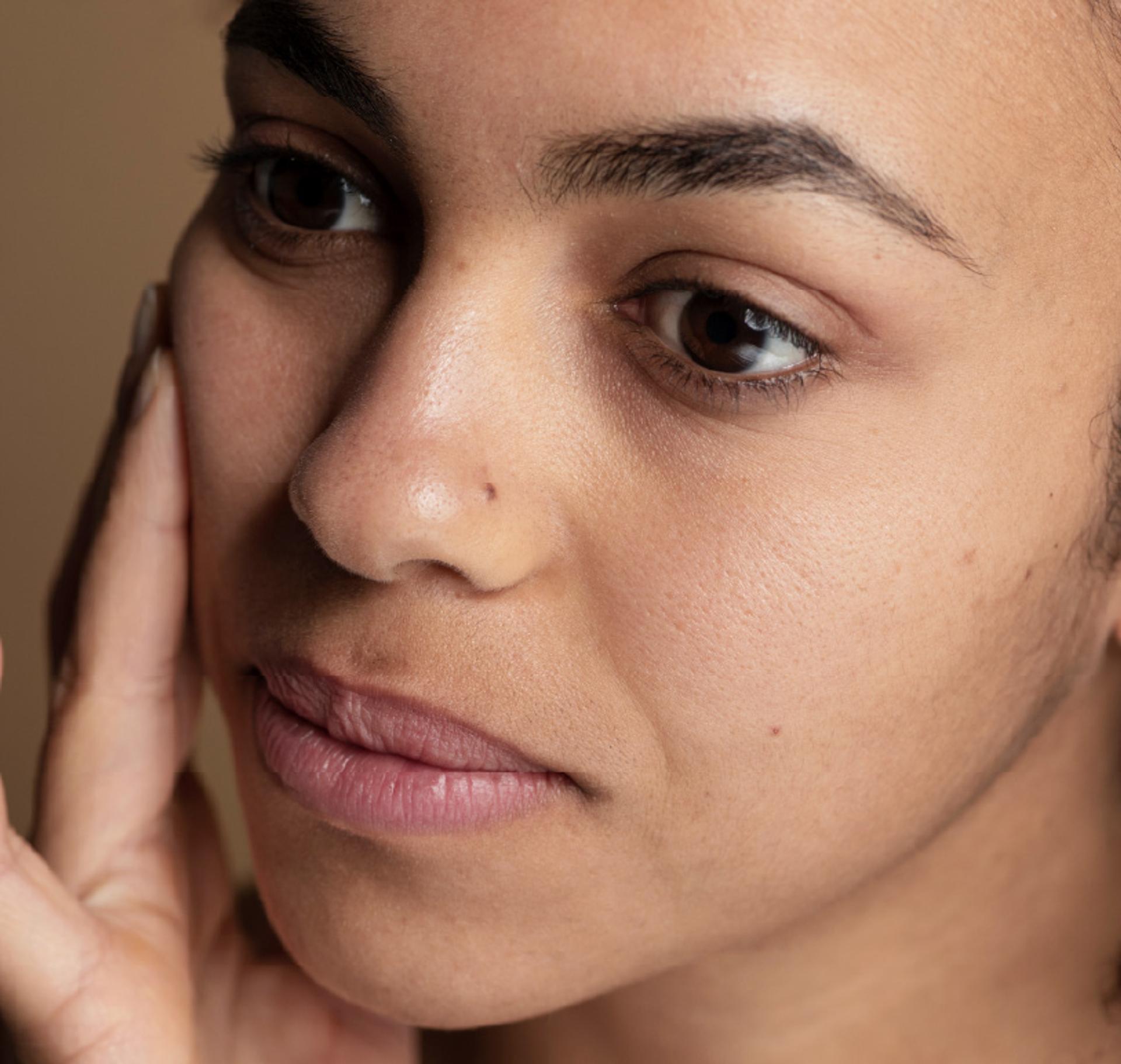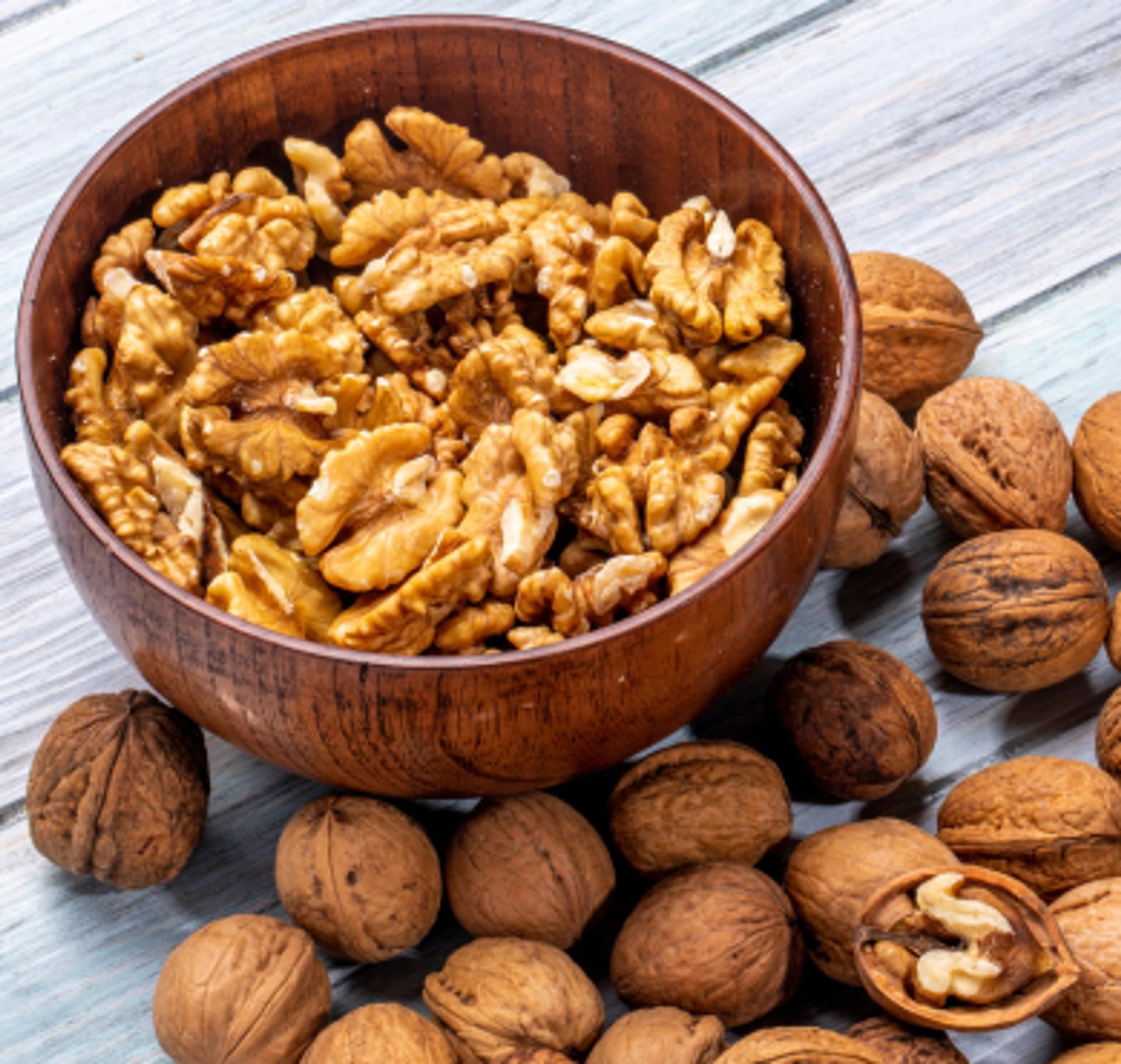
The Walnut Wisdom
A Brain-Shaped Beauty Secret
By Nat Habit
A nut that looks like a brain… must surely be good for the brain, right?
That’s what our mothers believed when they slipped 2 soaked walnuts into our breakfast bowls every morning. A bit crunchy, a bit bitter — and always followed by “it’s good for your mind.”
Turns out, they weren’t wrong.
But what most of us didn’t realize? This same walnut doesn’t just work on your mind — it works on skin, scalp, cellular resilience, even pigmentation pathways.
So let’s peel back the layers of this ancient, wrinkled seed — and discover how it nourishes not just intelligence, but radiance.
The Nutritive Blueprint
What’s Inside Walnut?
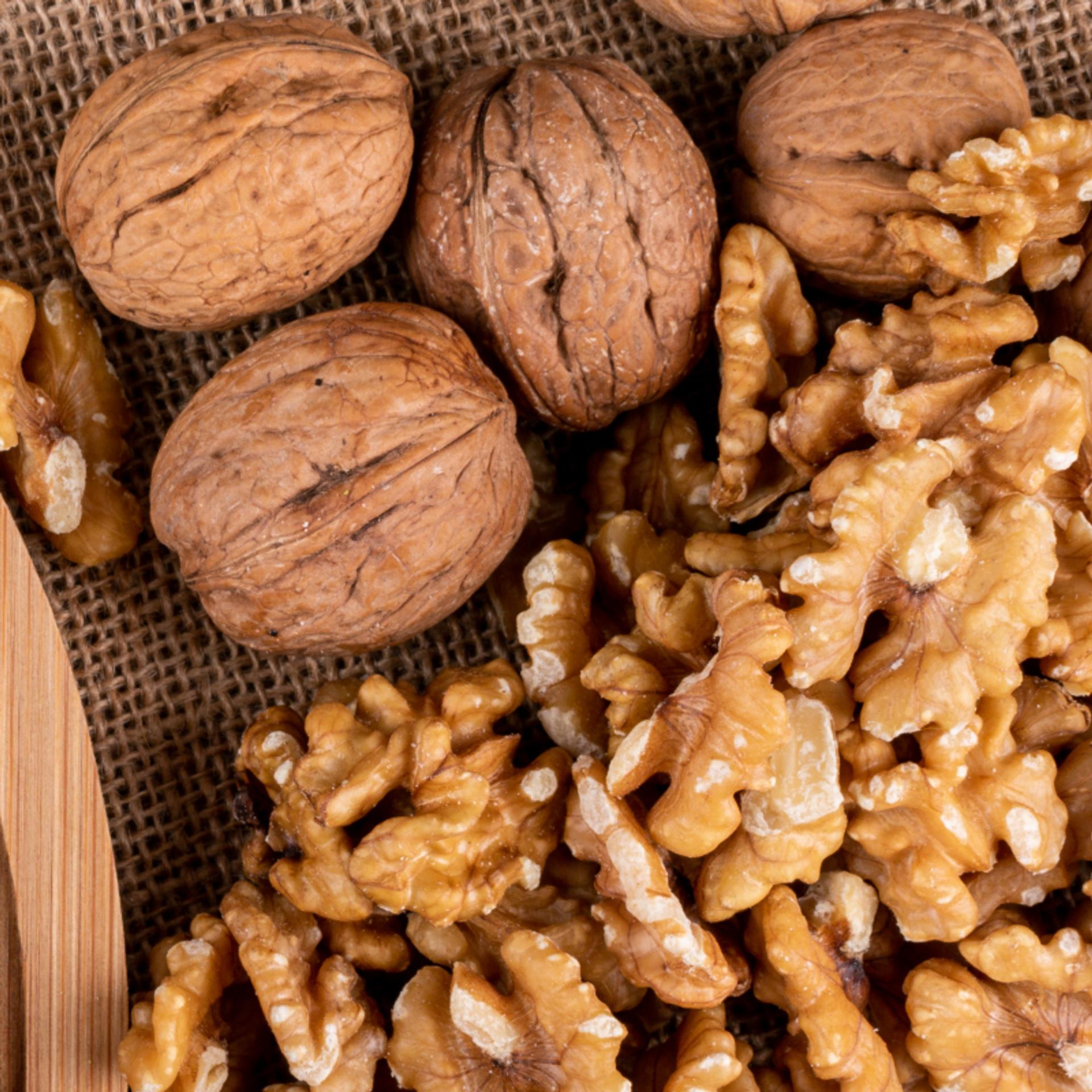
Think of walnut as a compact biological toolkit — a lipid-rich, antioxidant-dense, vitamin-loaded matrix that works at multiple levels of cellular health. Its most prized compound, alpha-linolenic acid (ALA), is a rare plant-based omega-3 that enhances neural plasticity, restores the skin’s lipid barrier, calms inflammatory scalp conditions, and improves cell membrane fluidity, making it essential for both skin and brain resilience.
Alongside this, walnut is densely packed with polyphenols like ellagic acid, gallic acid, quercetin, and juglone, which offer potent UV-DNA protection, suppress melanin overproduction, and reduce inflammatory signals in acne-prone or irritated skin. Its unique form of Vitamin E, gamma-tocopherol, is far more effective than its standard counterpart, helping reduce oxidative stress, repair dry skin barriers, and slow visible photoaging.
At the micronutrient level, walnut delivers a powerful trio — biotin, zinc, and selenium — that stimulates keratin and collagen synthesis, supports hair thickening and tissue repair, and maintains sebaceous gland balance. And finally, the green husk of walnut contains juglone, a rare naphthoquinone with natural antibacterial and antifungal activity, which helps detoxify dandruff-prone scalps, clear excess sebum, and gently regulate melanin — making walnut not just brain food, but a holistic skin and scalp healer from the inside out.
What Walnut Does for Skin

Rebuilds the Barrier
The fatty acid profile of walnut — particularly its omega-3 and omega-6 ratio — is ideal for restoring lipid-depleted, dry, or inflamed skin, especially in winter or after chemical exfoliation.
Fights Hyperpigmentation & Photodamage
Ellagic acid and juglone inhibit tyrosinase, the enzyme responsible for melanin overproduction. Used consistently, walnut helps reduce sun spots, tanning, and post-acne marks.
Enhances Elasticity
Polyphenols in walnut counteract ROS (reactive oxygen species) — the main culprits behind collagen breakdown. The result? Tighter, more resilient skin over time.
What Walnut Does for Hair & Scalp

Feeds the Follicles
Biotin, copper, and omega-3s support keratinocyte proliferation, reduce follicular inflammation, and stimulate anagen (growth) phase activity. This is critical for reversing hair thinning post-stress or post-partum.
Clears Scalp Congestion
Juglone works like a botanical antiseptic, reducing yeast activity, itchiness, and flakes, especially helpful in humid or monsoon seasons when fungal load peaks.
Delays Greying
The mineral profile of walnut, especially copper and selenium, helps protect melanocytes — the pigment-producing cells in your follicles.
How to Use Walnut
Activated Forms that Actually Work
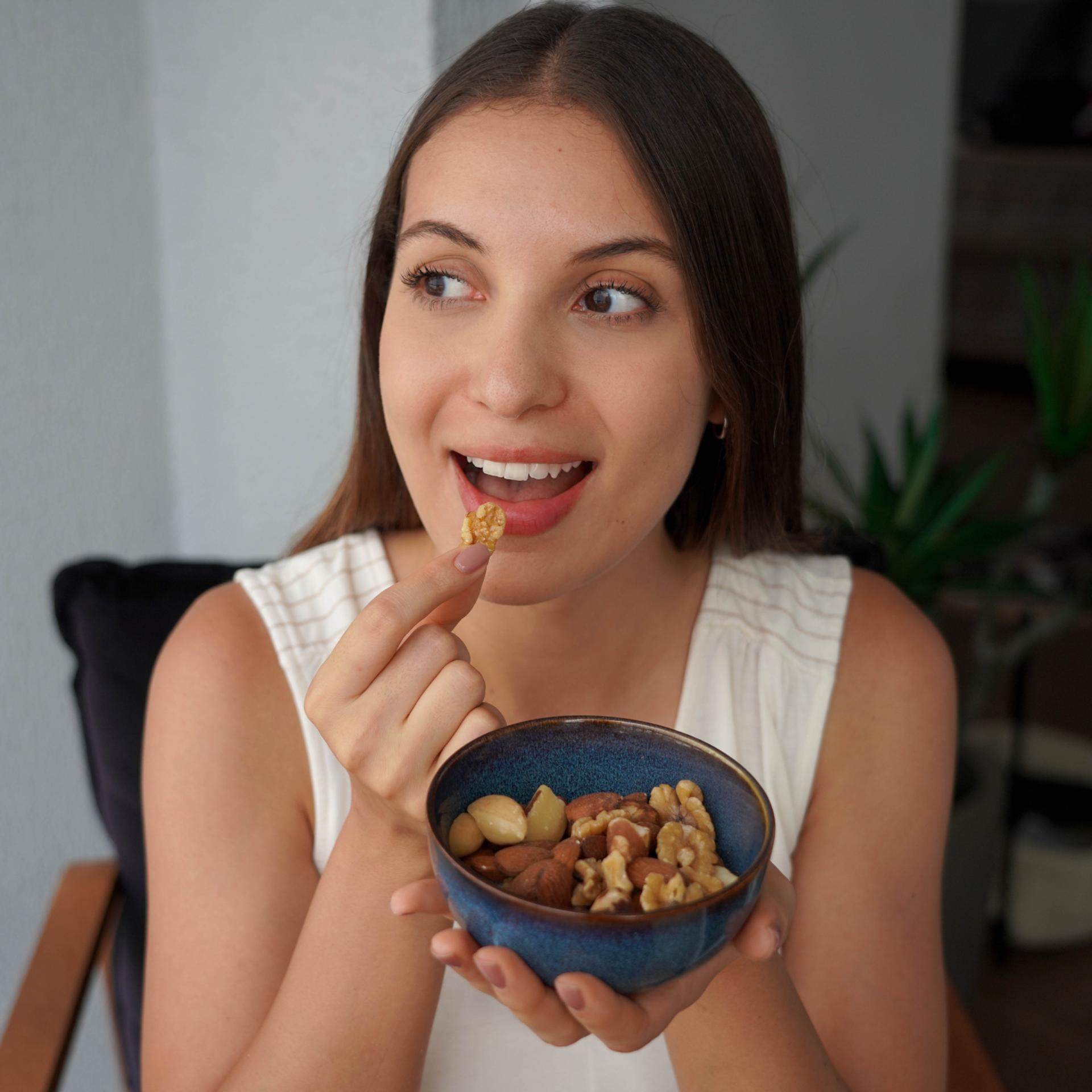
Topical
- Walnut Paste: Soaked overnight and finely ground, the friction releases bioavailable oils and phenolics. Apply as a gentle exfoliant or nourishing face pack.
- Walnut Oil: Use cold-pressed, unrefined oil warmed slightly and applied on damp skin or scalp. This boosts transdermal absorption and helps lock in moisture.
- Green Husk Infusion: Rare but powerful — steeped into decoctions or used as mask ingredients to target pigmentation and dandruff.
Internal
- Eat 4–6 soaked walnut halves every morning, preferably with a fat (like ghee) for better fat-soluble nutrient absorption.
- Raw = more omega-3s.
- Lightly roasted = more accessible polyphenols (but some oil loss).
- Combine with raisins, dates, or milk in Ayurvedic brain-boosting snacks.
When to Use Walnut
Seasonal Timing
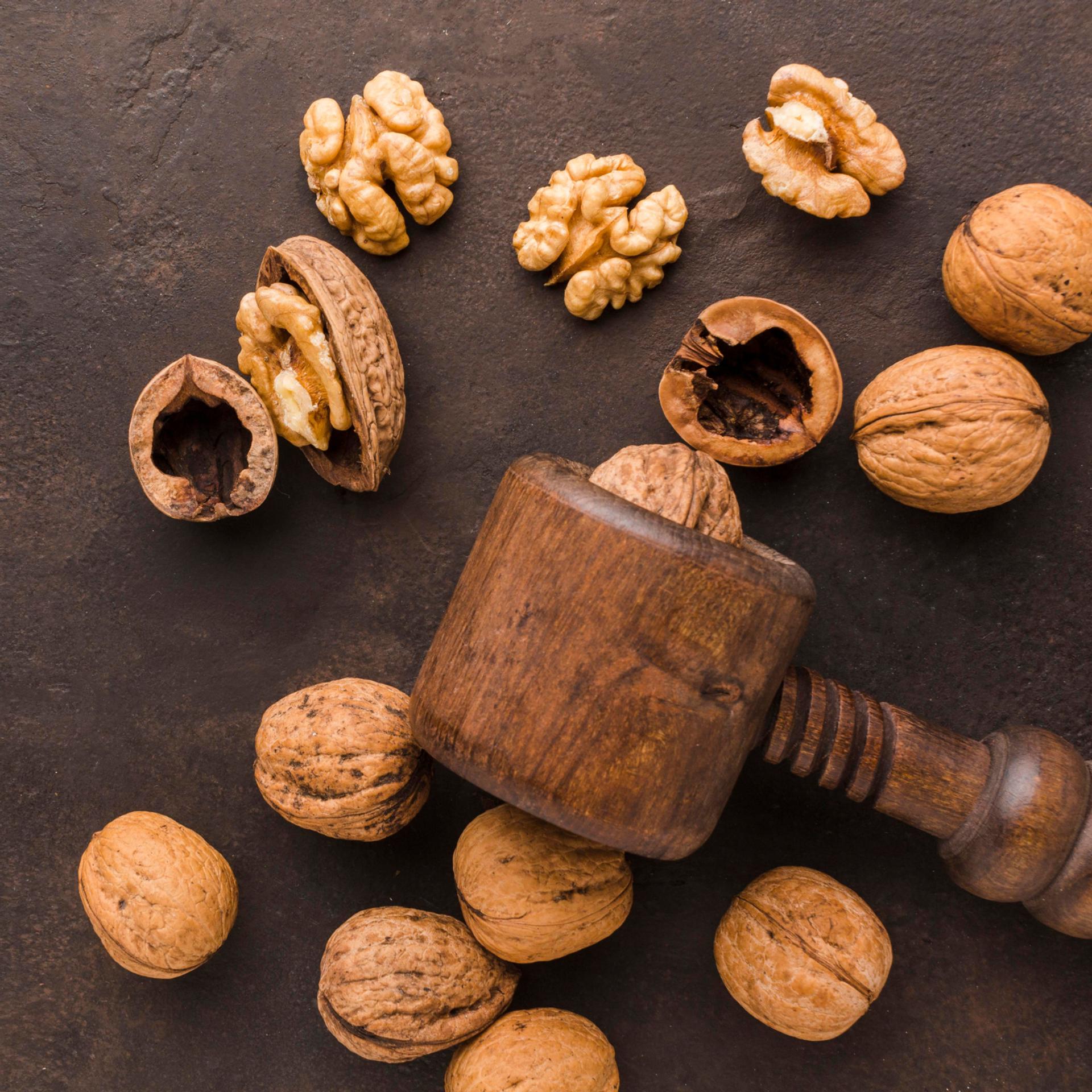
- Winter: Best internal and topical use — combats dryness, brain fog, and lipid-depletion.
- Summer: Use in moderation with cooling bases like rose or sandalwood.
- Monsoon: Best for antifungal scalp therapy and immune-boosting consumption.
The Ayurvedic View
Rasayana for Mind, Memory & Moisture
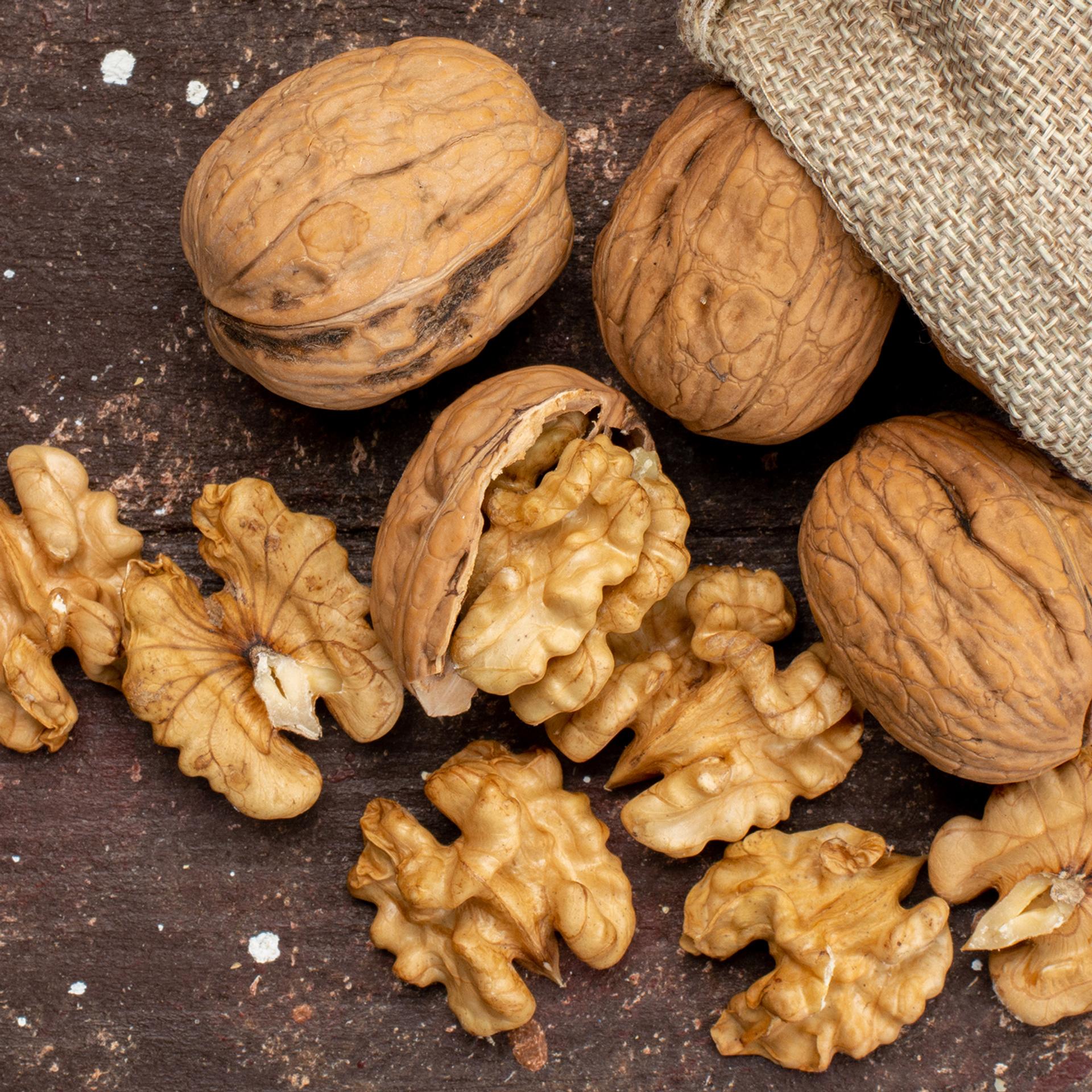
Walnut is seen as:
- Medhya: Supports brain function, memory retention, and nerve tissue regeneration.
- Vata-pacifying: Calms dryness, nervousness, and inflammation.
- Ojas-building: Enhances vital energy and immunity when taken with honey or milk.
One Warning
Choose Smart, Not Harsh
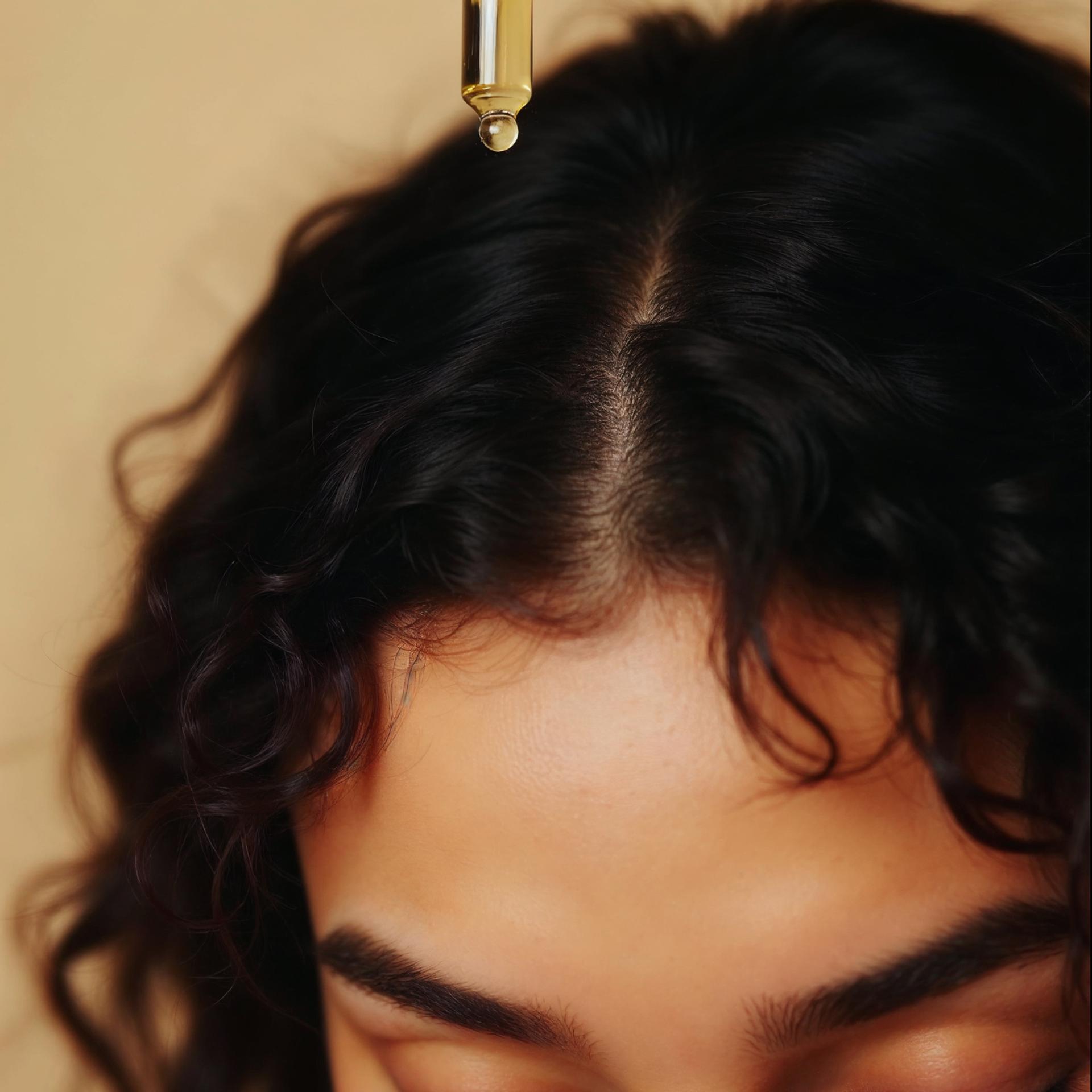
The Final Word
Smart Outside, Smarter Within
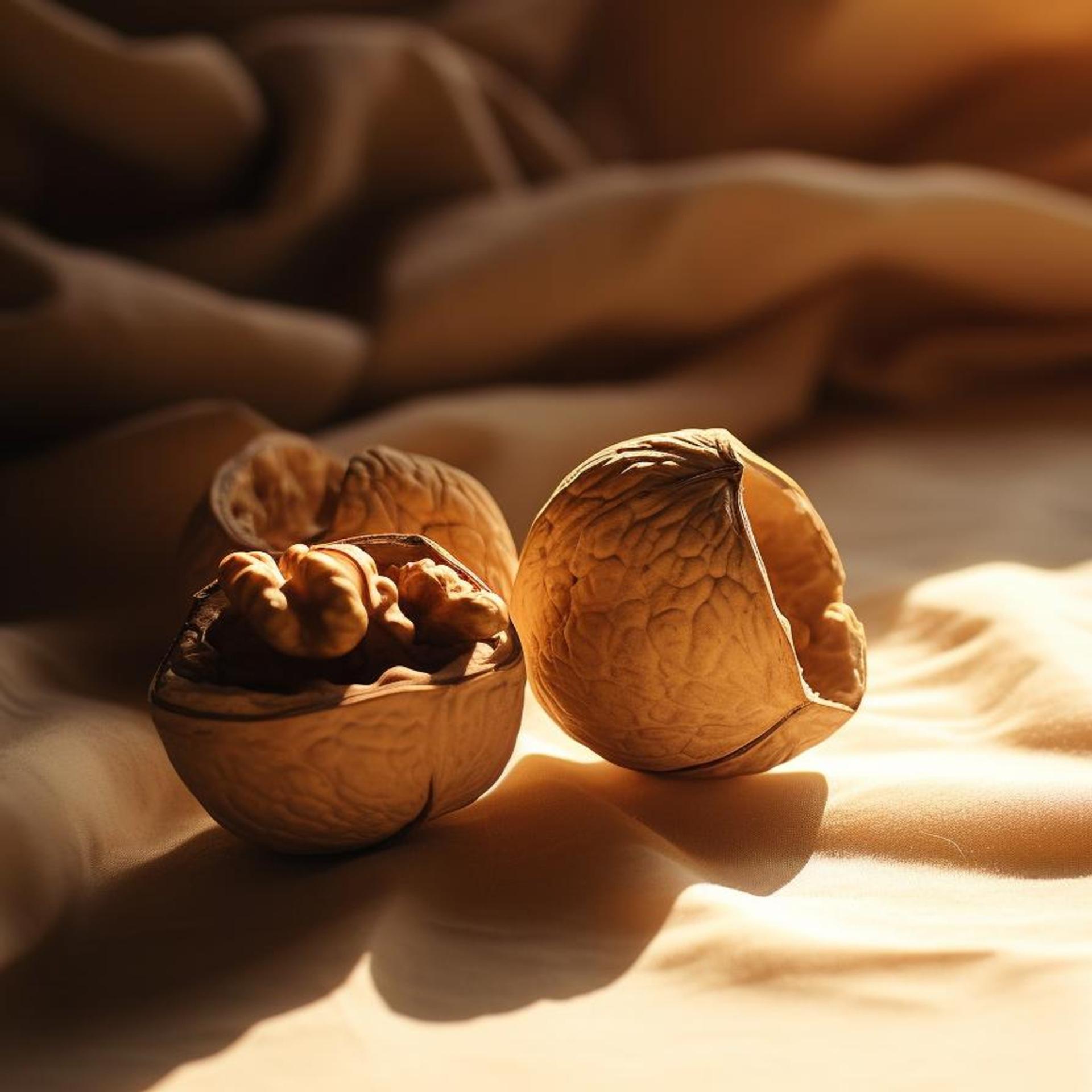
A nut shaped like a brain isn’t just poetic — it’s molecular truth. Walnut feeds your neurons, fuels your follicles, and fortifies your skin. But like most natural powerhouses, it doesn’t shout. It heals in rhythm, slowly, steadily, seasonally.
So next time you see that wrinkled little seed — know that it’s not just a breakfast nut. It’s a quiet master of regeneration.
And yes, your mother was right all along.
Learn more
